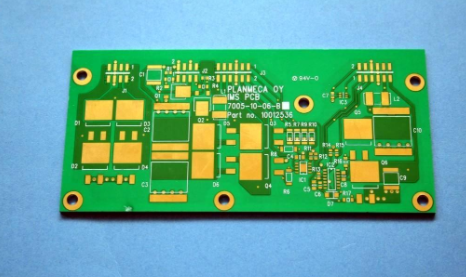Talk about four-layer board and 33 ohm resistor
Choosing a four-layer board is not only a problem of power and ground. High-speed digital circuits have requirements for the impedance of the trace. The two-layer board is not easy to control the impedance. 33 ohm resistors are generally added to the driver side, which also plays a role in impedance matching; when wiring, you must first route the data address line and the high-speed line that needs to be guaranteed;

At high frequencies, the traces on the PCB boardmust be regarded as transmission lines. Transmission line has its characteristic impedance. Those who have studied transmission line theory know that when there is a sudden impedance change (mismatch) somewhere on the transmission line, reflection will occur when the signal passes through, and the reflection will cause interference to the original signal, which will affect the normality of the circuit in severe cases. Work. When a four-layer board is used, signal lines are usually routed on the outer layer, and the middle two layers are power and ground planes. This isolates the two signal layers on the one hand, and more importantly, the outer layer traces and the plane they are close to form a balance. For the transmission line of "microstrip", its impedance is relatively fixed and can be calculated. It is more difficult to do this for two-layer boards. The impedance of this kind of transmission line is mainly related to the width of the trace, the distance to the reference plane, the thickness of the copper and the characteristics of the dielectric material. There are many ready-made formulas and procedures for calculation.
33 ohm resistors are usually connected in series at one end of the drive (in fact, it is not necessarily 33 ohms, from a few ohms to five or sixty ohms, depending on the specific situation of the circuit). Its function is to connect with the output impedance of the transmitter in series. The impedance of the line is matched, so that the signal reflected back (assuming that the impedance of the de-receiving end is not matched) will not be reflected back (absorbed) again, so that the signal at the receiving end will not be affected. The receiving end can also be used for matching, such as using resistors in parallel, but it is less used in digital systems, because it is more troublesome, and in many cases it is one-transmitting and multi-receiving, such as address bus, which is not as easy to do as the source-end matching.
The above is about the introduction of the four-layer board and 33 ohm resistors. Ipcb is also provided to PCB manufacturers and PCB manufacturing technology.